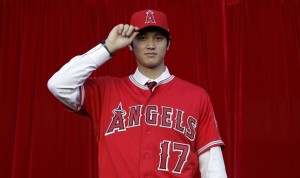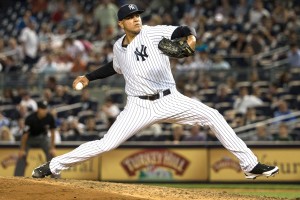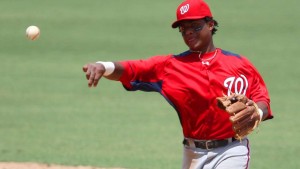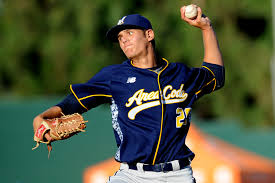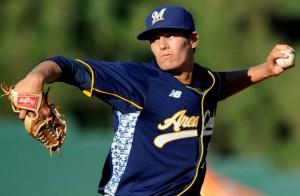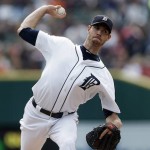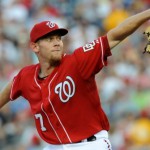We now know that Japanese superstar Shohei Ohtani has signed; he’s going to the Los Angeles Angels … or in other words, the other baseball team in Los Angeles. His selection of that team seems to have been driven by a desire to be on the West Coast, his apparent desire to be on an AL team to open up the DH opportunities in-between his starts … and his insane desire to leave literally tens of millions of dollars on the table.
I was listening to a podcast where some guy was trying to argue that Ohtani was actually making a “good” business move by coming over now. I was flabbergasted. The guy’s main argument was that by coming over now, he gets to free agency two years earlier and thus can get more money then. But it gave zero credence to the fact that he’s going to be costing himself literally tens of millions of dollars by playing for MLB min salaries for three years.
I thought i’d try to map out just how ridiculously bad his financial decision was to leave Japan now versus in two years, when he’d be 25 and would be an unrestricted FA. So, using some simple guesses and projections, here’s an attempt to discuss just how much money he’s leaving on the table.
By coming over now, he is subjecting himself to the same rules as any other IFA; he gets the maximum bonus that the Angels can offer ($2.315M after they acquired some bonus money just ahead of the signing). He’ll play for the MLB minimum the next three years. Then he’ll enter arbitration, with the caveat that any shenanigans in the contracts he may sign to buy out arb years will probably be voided by MLB. So we’ll use the records for 1st/2nd/3rd year eligible arb players as benchmarks.
By year:
- 2017: $2.315M bonus
- Age 23-25 seasons: 2018, 2019, 2020: MLB minuimums or there abouts; lets assume he gets good raises and earns $545k, $800k and then $1.1M (Mike Trout owns the current record for pre-arb player salary of $1M).
- Age 26 season in 2021: 1st arb year; $10M, which is Ryan Howard‘s current record for first year arb eligible players … and which is significantly higher than the 1st year record for pitchers (Dallas Keuchel‘s $7.25M).
- Age 27 season in 2022: 2nd arb year: $11.3M
- Age 28 season in 2023: 3rd arb year: $15.5M
- Age 29 season in 2024: 4th arb year (why does he get a 4th year? Because what’s stopping the Angels from keeping him in Spring Training until a few weeks have passed and keeping him for an extra year? Wouldn’t you?): $19.75M.
So, adding that up; assuming he matches the absolute highest figures in arb figures and doesn’t sign an extension, he’d earn $61.31M in bonus and salary by the time he’s reached Free Agency.
Versus ….
- 2018: plays in Japan at his current salary of about $2.378M
- 2019: does the same.
And in 2020, he comes over here completely unencumbered and signs a massive deal. The pundits that i’ve read, when asked what he’d be worth on the open market right now, say between $200M and $240M in total value. Their argument would be that he’d easily be the best FA on the market, he’s got better stuff than any pitcher out there (he sits upper 90s, touches triple digits and per Dave Cameron of fangraphs has spin rates the equivalent of Luis Severino … all while producing at the plate and being an 80 runner). $200-$250M is a crazy contract to try to project to … so lets assume, for the sake of argument, its a $25M AAV deal (which is probably light, but makes the point anyway). To then cover the same years as the above scenario:
- 2020, 2021,2022, 2023,2024 at $25M/per.
So that’d be $125M plus his two years of Japan salary. That’s a difference of about $65M just between now and 2024 … and that assumes several key points (that he gets the arbitration record each year, that he continues to get his ridiculously cheap $2.3M Japanese salary, and that he “only” gets $25M AAV).
Odds are that the actual difference would be much higher, since he’s likely to get a lot more than $25M AAV. Why? Because unlike typical Pitcher FAs we see in the majors … he’s still in his early 20s, he’s got no injury history … and he can hit! So if you think he’s likely to get closer to $35M AAV … then add another $50M to that $65M gap above and now you see why people are saying he’s making a $100M mistake.
Yes, Ohtani will be making bank through endorsements. So he’s not going to be hurting for cash. But the life of a pro athlete can be fleeting; you get as much as you can, as soon as you can, because there’s no guarantees about what happens tomorrow. Ohtani might blow out his elbow twice in four years and he’s out of the league before he even hits free agency. Or he might turn into the next Roger Clemens. He’s making a huge gamble though in order to “compete” against the best now versus in a couple years.
(I think I got the above scenario right … let me know if there’s some detail of his contract that I missed).
